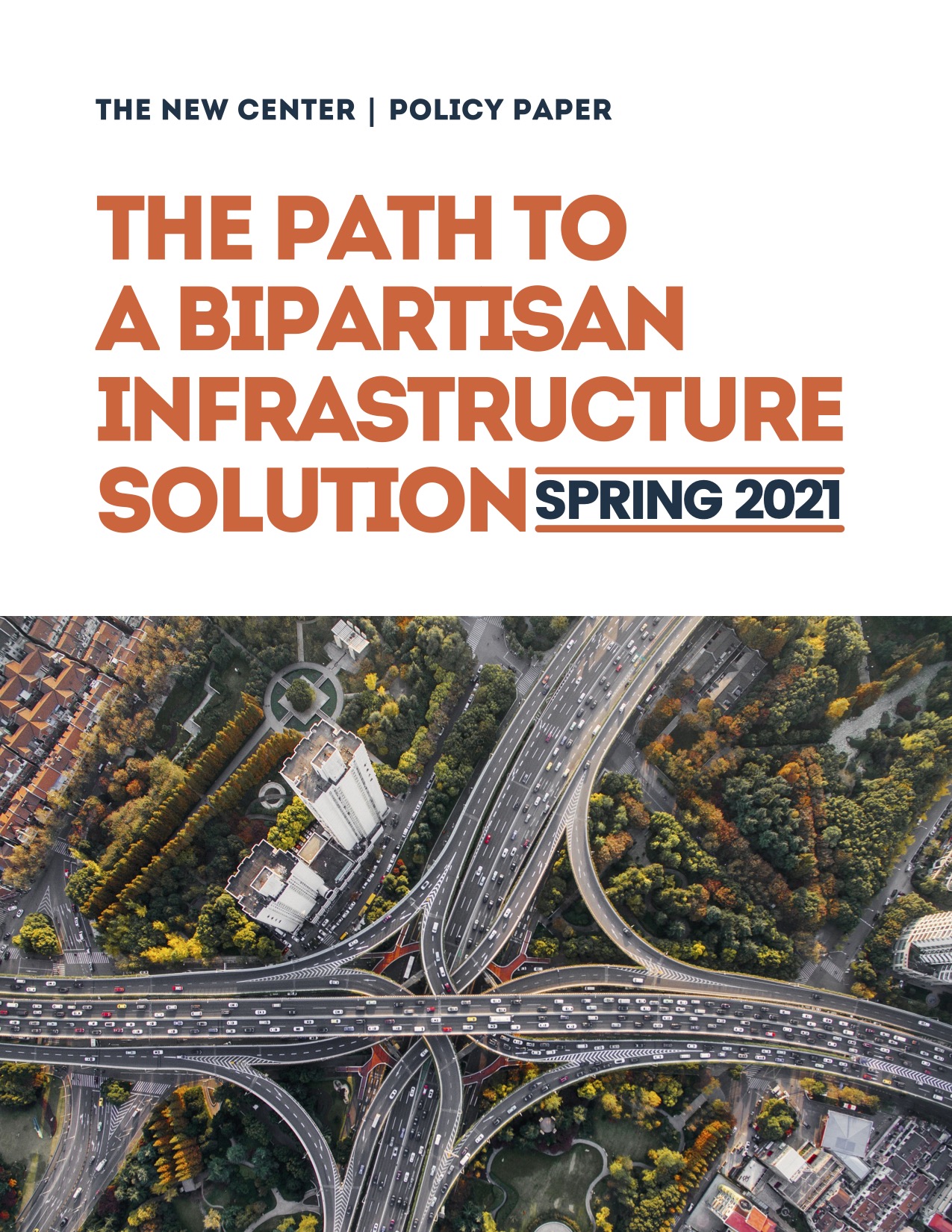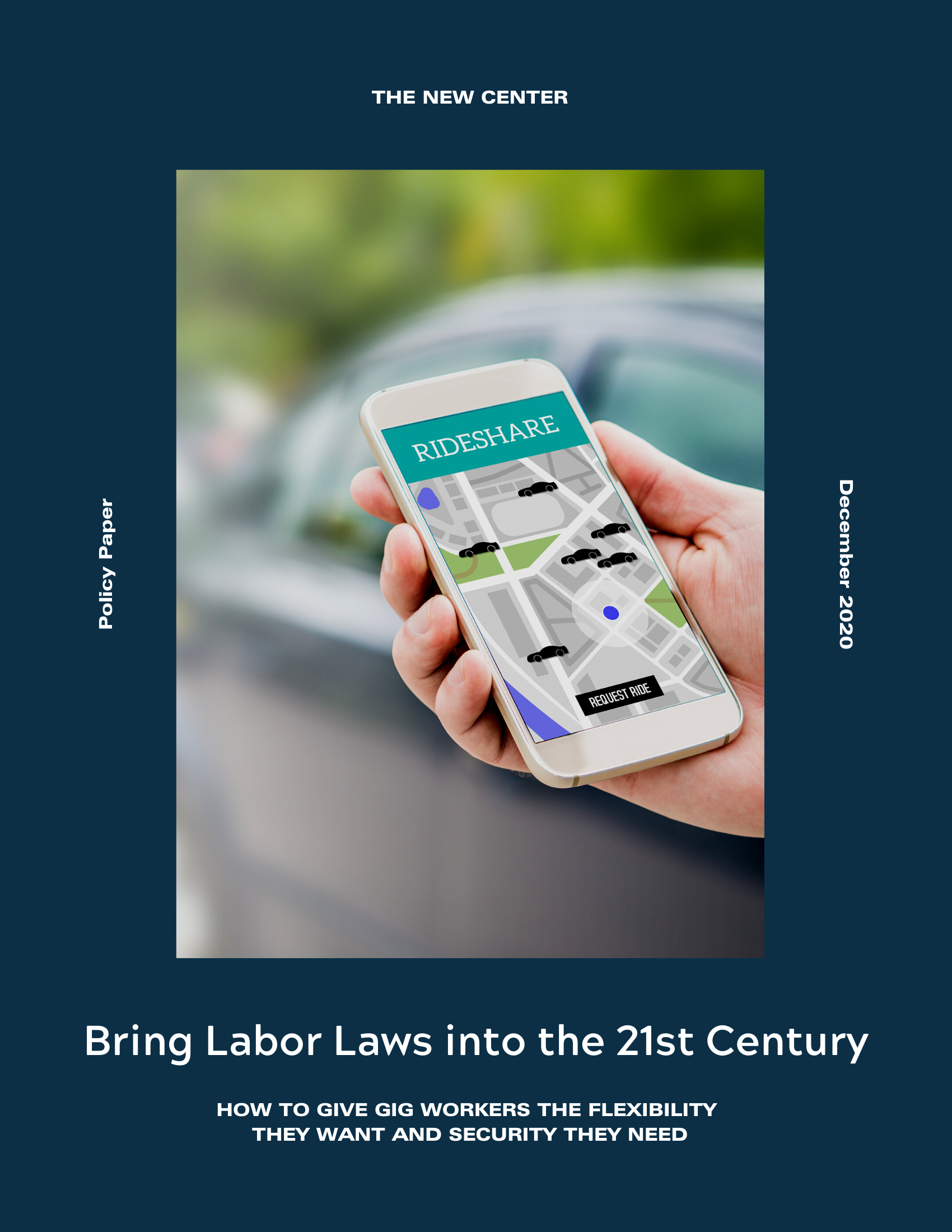Publications
The Path to A Bipartisan Infrastructure Solution
Infrastructure is a two-party problem that demands a two-party solution. But getting there will require creative thinking to determine which investments we should prioritize and how to pay for them. This paper from The New Center provides a bold and bipartisan plan for rebuilding and investing in America.

OVERVIEW
Our Solutions In Brief
Creating a nonpartisan “National Infrastructure Board”—modeled on the proven military Base Realignment and Closure (BRAC) commissions—to determine which projects to prioritize.
Federal “New Starts” transit funding is granted based upon a scoring system that favors a new facility over adding core capacity. The Federal Transit Administration should update the scoring system to assure that core capacity projects are competitive with new starts.
Congress should introduce a program to incentivize states and localities to streamline their procurement processes and speed up the delivery of infrastructure projects.
The federal budget should be separated into two parts—a capital budget for long-term investments such as research and infrastructure, and an operating budget for annual expenses.
There are many policies—some of which can be incented federally but implemented at the state or local level—that would create and dedicate separate funding streams for infrastructure, including user fees, tax increment financing, and dedicated property or sales tax assessment to fund essential infrastructure.
Congress requires federal funding to be spent on particular classes of infrastructure projects (e.g., water). These restrictions should be changed or eliminated to give localities more flexibility to spend on their greatest needs.
The “tax gap”—the difference between taxes owed and taxes paid—is around $574 billion annually. Improving the IRS’s resources, technology, and funding could raise an estimated $1.6 trillion over ten years.
A certain class of infrastructure assets (e.g., airports) may be better served by privatization. These assets will, upon sale or lease, generate a financial return for investors without government support or incentives.
Some assets can attract private investment if they are supported through some type of incentive or credit enhancement such as federal and state tax credits, government credit enhancements, or low-cost leverage.
Statutory or regulatory changes (e.g., classifying certain infrastructure projects as meeting banks’ Community Reinvestment Act requirements) could broaden the pool of investors who could finance infrastructure projects.
Congress should encourage the wider use of private activity bonds by eliminating state volume caps for water and other projects, and excluding private activity bonds from the Alternative Minimum Tax.
Congress should reauthorize the Build America Bonds (BAB) program, which permitted governmental bodies to issue taxable and tax-exempt bonds.
States could pool several investments of varying risk characteristics to diversify systemic risk and reduce the cost of financing, much like infrastructure banks.
Create equity instruments that allow individual investors to participate in infrastructure investment via mutual funds, ETFs, and/or 401(k)s.
Facts At-A-Glance
-
 C-
C-The overall grade for American infrastructure from the American Society of Civil Engineers
-
 $2.6 trillion
$2.6 trillionAmerica's infrastructure funding gap
-
 $416 billion
$416 billionin public money spent on infrastructure was spent at the state or local level




